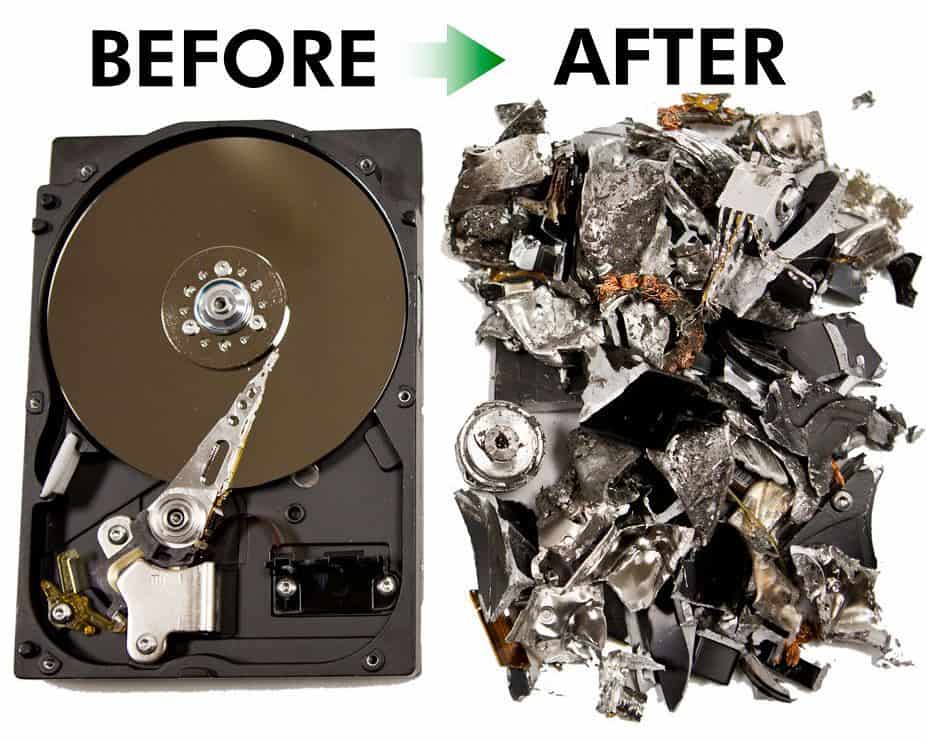The Important Nature of Data Destruction in Upholding Computer Safety Providers and Protecting Versus Unauthorized Gain Access To
In a period where information violations and identification theft are increasingly widespread, the relevance of effective information damage can not be overstated. Organizations has to recognize that the failure to properly get rid of delicate details postures not only legal and monetary threats however also a potential disintegration of client trust fund. Various techniques, from data cleaning to physical devastation, function as critical safeguards versus unapproved gain access to. However, understanding the ramifications of information damage techniques and conformity with guidelines raises necessary questions concerning the adequacy of present techniques and their long-term viability in the face of evolving dangers.
Relevance of Information Devastation
In a significantly electronic world, the significance of information devastation can not be overemphasized. As organizations accumulate substantial amounts of delicate info, the prospective repercussions of failing to correctly handle and dispose of that data end up being increasingly severe. Information breaches, identification theft, and business reconnaissance posture substantial dangers, underscoring the need of effective data destruction methods.

Furthermore, as modern technology develops, so also do the approaches by which malicious stars seek to manipulate sensitive details. Organizations should stay watchful and proactive in their data devastation techniques to safeguard versus these developing hazards. By prioritizing information damage, business not just secure their possessions but likewise foster trust fund amongst customers and stakeholders, showing a dedication to liable data management and protection practices.
Approaches of Effective Data Devastation
To make sure the permanent and total destruction of sensitive information, organizations can use a variety of reliable approaches tailored to their particular requirements. Among the most common methods is data cleaning, which involves making use of specialized software program to overwrite existing information multiple times, making healing essentially difficult. This is specifically valuable for disk drives and solid-state drives, where standard deletion methods are inadequate.
An additional reliable method is degaussing, which makes use of strong magnetic fields to disrupt the magnetic domains on storage media, making the data irretrievable. This technique is specifically matched for magnetic storage space devices, such as disk drive and hard drives.
Physical damage is additionally a viable option, involving the shredding, crushing, or incineration of storage space devices. This technique assurances that data can not be recuperated, making it perfect for organizations dealing with very sensitive information.

Conformity With Information Defense Rules
Organizations must not only concentrate on efficient data devastation methods yet additionally guarantee conformity with information protection policies that control exactly how sensitive information is dealt with and taken care of. Following these laws is important for keeping and guarding personal data consumer depend on. Laws such as the General Data Defense Guideline (GDPR) in the European Union and the Health Insurance Mobility and Accountability Act (HIPAA) in the USA enforce strict standards on information monitoring, that include demands for the protected disposal of sensitive details.
To accomplish conformity, organizations should execute extensive information damage plans that straighten with these lawful frameworks. This includes determining information that needs devastation, establishing methods for protected methodsâEUR" such as shredding physical media or making use of software application that satisfies industry requirements for data wipingâEUR" and preserving detailed records of destruction tasks. Normal audits needs to be performed to ensure adherence to these plans and to determine any type of prospective locations for renovation.
Failure to abide by data defense regulations can bring about considerable legal ramifications, consisting of significant penalties and damages to a company's online reputation. Integrating conformity into data damage methods is not only a legal responsibility more info here but additionally an important element of a durable details security approach.
Consequences of Poor Information Handling
Poor information handling can result in extreme effects that expand beyond immediate functional setbacks. Organizations may face significant monetary losses as a result of information breaches, which commonly cause pricey removal efforts, legal charges, and regulative penalties. These economic implications can hinder and stress sources growth, ultimately affecting an organization's profits.
Furthermore, poor information handling can seriously damage a company's track record. Consumers, companions, and stakeholders may shed rely on an entity that fails to shield delicate info, resulting in lowered client loyalty and prospective loss of company opportunities. This disintegration of trust fund can take years to restore, if it can be recovered whatsoever.
In addition, organizations can encounter legal ramifications developing from non-compliance with information defense laws. Such offenses may result in fines and examinations, worsening the financial concern and further tarnishing the organization's photo.
In the world of cybersecurity, insufficient data administration techniques can create susceptabilities that make systems extra vulnerable to unapproved access and cyberattacks. Inevitably, these repercussions go to website emphasize the crucial relevance of applying durable data handling treatments to safeguard sensitive information and maintain business honesty.
Finest Practices for Secure Information Disposal


Firstly, information should be classified according to its sensitivity. Sensitive information requires much more extensive disposal approaches, such as shredding physical files and utilizing innovative software program for digital data wiping. Utilizing qualified information destruction services ensures compliance with industry laws and requirements.
Second of all, organizations ought to apply an information disposal policy that mandates routine audits. This policy ought to describe the procedures for information retention and destruction, guaranteeing that obsolete data is taken care of without delay and firmly. Educating employees on these protocols is vital to cultivating a culture of safety and security understanding.
Last but not least, maintaining detailed records of disposed information enhances accountability and offers a clear audit route. This documentation ought to consist of the sort of data ruined, the method made use of, and the day of disposal.
Verdict
Finally, the necessary of efficient information devastation appears in its role in improving computer system security solutions and alleviating unauthorized gain access to risks. Embracing durable techniques such as information cleaning, degaussing, and physical devastation, together with compliance with regulations like GDPR and HIPAA, is essential for guarding sensitive info. Disregarding proper data disposal practices can lead to severe effects, including information violations and legal repercussions. Implementing ideal methods in safe and secure information disposal inevitably strengthens organizational integrity and customer trust.
In an age where information violations and identification burglary are progressively widespread, the value of effective data destruction can not be overstated. data destruction. Information breaches, identification burglary, and corporate espionage posture considerable risks, emphasizing the necessity of reliable information devastation techniques
Conformity with regulations such as GDPR and HIPAA mandates that companies this page execute rigorous information security procedures, including the secure damage of data at the end of its lifecycle.
By prioritizing information destruction, business not just safeguard their possessions yet likewise foster count on amongst stakeholders and clients, showing a commitment to accountable data administration and safety and security methods.
Organizations should not only concentrate on reliable data devastation approaches however likewise ensure conformity with information defense policies that regulate exactly how sensitive details is managed and disposed of.